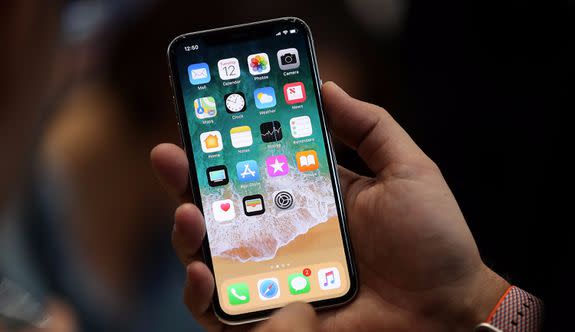Smartphones are more interesting now than they've been in years

If you think smartphones are boring right now, you haven't been paying attention.
Four or five years ago, you would have been dead on. At the time, smartphone design had basically settled on gray slabs of plastic, aluminum, and glass. Windows Phone and BlackBerry 10 were still in the mix with Android and iPhone, but even though there was more variety in platforms there wasn't in experience. Feature differences mostly amounted to who had the best camera or whether or not you liked Swype.
SEE ALSO: Everyone's waiting for the iPhone X, and that may be bad news for Apple
Fast-forward to today: Right now we're experiencing an inflection point both in smartphone design and their supporting ecosystems, and it means what you get by choosing one phone over another diverges considerably. From home buttons to biometrics to camera tech to AI, there's more separating today's smartphones than there has been in a long time.
That's why I find it perplexing that anyone would argue, in 2017, that all phones are the same. Sure, at first glance, the iPhone X and the Google Pixel 2 might both look like they're offering up the same small screen to put in your pocket, but that just shows you're not looking closely enough. A Tesla and a Toyota look basically the same, too.
Hardware upheaval
But even if we restrict ourselves to just phone design, the case for boredom doesn't hold water. There's a movement right now to push phones toward "edge to edge" displays, with screens that (nearly) encompass the entire front of the device. Implementing such a design introduces a host of issues, which manufacturers deal with in different ways.
The home button goes away, for starters. On the Android side this isn't such a big deal since physical buttons have been optional for a long time, but Samsung is still doing innovative things with its "virtual" home button, which makes part of the screen more pressure sensitive. And with the iPhone the issue is cranked to 11. Killing the home button means the iPhone X unlocks and operates fundamentally differently than all iPhones before it. It also means completely rethought biometrics.
Then there's the notch. Pushing the screen to the edges means little to no room for front-facing sensors and the selfie camera, and phones are dealing with the issue in different ways. Some, like the Pixel and LG G6, are content to simply shrink the "chin" and "forehead" of the phone as much as possible. Others, the iPhone X and Essential Phone included, opt for an unusually shaped screen to accommodate the front sensors.
As phone screens are enlarging, their aspect ratios are in a state of upheaval. Samsung's new phones have an 18.5:9 ratio. The Essential phone 19:10. The iPhone X is 19.5:9. The LG G6 is 18:9. Most existing phones are 16:9 or something pretty close.
So for each change, which solution works best? And which one will win out and eventually become standard? Here's the thing: We don't know — and that's a big part of why this is such an exciting time for smartphones.
Evolution of the smartphone
The other part is the software, or more accurately, the underlying ecosystems. The argument that it's still just an Android/iOS debate, and that — once you get past the hardware — the smartphone is just a window to apps and services that are the same on any phone, just isn't true anymore. And that's because of AI.
The smartphone is rapidly transforming from a portable computer to an all-purpose gatekeeper to unlocking the true potential of all our technology. Its connections to your car, your house — your everything — are becoming just as important as which apps you use, and a phone's digital assistant is starting to actually matter. Google, Apple, and even Samsung all have compelling visions here. Who's going to win? Again, we don't know, but which phone you buy matters a lot here.

Image: Getty Images
I could go on. Dual-camera systems between phones are substantively different, with some using the second lens for 3D effects, others for telephoto ability, and more to simply improve picture quality. Curved corners vs. right angles. Always-on OLED screens vs. LCDs. Headphone jacks vs. well, no headphone jacks.
All this variety has a consequence, though: Buying a new phone can be a fairly risky endeavor right now. Lots of mobile technologies and design trends are essentially at a "1.0" stage, and some are bound to fall flat in the long term
But there's no question smartphones are more interesting now than they've been in years. That tiny screen in your pocket is changing, and for once we're not sure how it's going to play out.
WATCH: Ikea is roasting Apple for overpriced charging mats

Every editorial product is independently selected by Mashable journalists. If you buy something featured, we may earn an affiliate commission which helps support our journalism.

 Yahoo News
Yahoo News 
